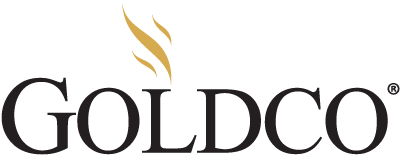Disclosure: Some of the links in this article are from sponsors. The list below is an honest review gathered from thorough research, experience, and consumer-based feedback.
#1 Overall

5/5 Rating
#2 Overall

4.5/5 Rating
Most investors, if they invest in gold, allocate only around 5 to 10% of their portfolio in gold.
The general rule is that when the stock market and the bond market are considered lackluster, investors consider investing in gold.
However, that was the old rule.
Today, many financial advisers are recommending that many financial analysts recommend investors consider investing in having up to 15% of their portfolio in gold.
Why the difference? Hyperinflation.
The United States inflation rate edged from 1.2% to 5.4% in September of 2021, and by the end of the year, inflation is expected to hit 5.5%.
Inflation is so high in fact, that the Federal Government raised the cost of living allowance (Cola) rate for the coming year to 5.9 percent, the largest increase since the 1970s and 1980s.
And supply chain economics are not helping. Already, the price of gas nationwide is nearly $4 per gallon, and heating oil this winter is expected to go up 43 percent.
Meanwhile, many analysts are predicting that stocks will flatline in 2022, topping off at a mere 2 percent.
As a result, gold is looking much better as an investment in 2022, particularly when the Federal Government plans to spend trillions in social programs, as well as another one trillion for infrastructure programs.
Mind you, most analysts do not expect gold to significantly go up in 2022.
The best estimate are that gold will be steady at around $1800 an ounce.
However, with stocks expected to lose a minimum of 3% due to inflation in 2022, and housing loan rates expected to go up 4% in the coming year, gold is looking better and better for investors to hold their own in the economic roller coaster ride of next year.
But before you decide to invest in gold, it is important to consider the best options for gold, and those options center around Gold IRAs and Gold ETFs.
Thus, this article concentrates primarily on those gold investment schemes.
1. Gold IRAs
If you are considering buying gold at all, then consider a gold IRA.
What is a gold IRA?
A gold IRA is a self-directed individual retirement account that allows you to own gold for retirement.
While you'll still pay a premium for the gold you bought for your IRA and have the same problems deciding where to keep the gold and the attendant expenses involved, the advantage of a Gold IRA is that the money you invest is tax-deferred.
Consult your accountant for IRA rules with the IRS, but generally, a $6,000 investment in an IRA can shave close to $2,000 on your taxes.
And for many, the combination of having a Gold IRA with any other traditional IRA is a great way to diversify (there is no limit on the amount of IRA's you can hold, although there is a limit on the amount of money you can contribute to all of your IRA's combined.)
The bottom line is that the tax benefits may outweigh any disadvantages of keeping physical gold, and thus, if you are skittish about the stock or bond market, you can hold gold for security and at the same time save money on your taxes.
 | $50,000 Minimum Investment Free portfolio reviews for all clients | *Most Professional *Best Pricing |
2. 401k to a Gold IRA Rollover
Many people have a 401k retirement account with their employer or former employers.
With a 401k account, employees have a certain amount of money invested in an account for their retirement, and often the company contributes as well.
With a 401k account, the money can be tax-deferred immediately until you retire and take the money out (presumably when they have less total income and thus less to pay in taxes)
or
in the case of Roth IRA you are taxed now, and the money is tax-free when you retire and take it out.
While employees are given the option of what to invest in with a 401k, note that traditional 401k's never included gold as an investment.
But, operating within the rules, there are ways indeed to transfer money from a 401k account to a Gold IRA.
3. Traditional IRA to a Gold IRA Rollover Guide

First of all, if an employee is no longer with the firm, he is allowed to roll over his account into an Individual Retirement Account of any type,
including a Self-directed Individual Retirement Account, meaning you and you alone, decide how to invest the funds. This is a great time to review our guide to rollover your traditional IRA to a gold IRA.
And if you have say $500,000 in and 401k account at your old company, you can immediately invest all $500,000 of it in a gold self-directed IRA account.
Or, if you only want to put $50,000 into Gold and the remaining $450,000 in a more traditional account, you certainly have that option.
But what about if you are still employed with your original employer?
Yes, you can take a distribution of the funds, then buy gold and have a self-directed IRA and if you do it within 60 days, there is no tax penalty.
Gold Storage
It is important to know though, that with a Gold IRA account, you can't just buy gold and stash it in a safe at home.
You must have a gold IRA depository take hold of the gold and store it for you. Otherwise, there are heavy tax penalties.
4. Gold ETFs VS Gold Mutual Funds
What are gold ETFs?
Essentially, a gold ETF is a collection of a significant amount of gold that is sold, just like stocks.
Just as by owning a share or two of General Motors, you can't just walk into the plant and haul off a new Corvette, so too, with a gold ETF, you don't get to take any gold home, even if you own half the shares in the company.
Gold ETFs certificates are stock and note that there are sizable capital gains taxes associated with them.
Again, consult your tax accountant for more information and read up on the differences between gold futures and gold ETFs, too.
What's a Gold Mutual Fund?
Finally, there are gold mutual funds.
A gold mutual fund is very similar to the operation of an ETF, however, there are certain technical requirements for the buying of gold, and ETFs can be hard to understand.
As a result, certain gold collectives have created gold mutual funds, which invest in the probability of ETFs.
The major difference with gold mutual funds is that buyers can invest in much smaller quantities than they can with a gold ETF.
Again, talk to an accountant, because like their counterpart, Gold Mutual Funds do have tax consequences.
The Bottom Line?
First, understand that gold has done its best when stocks and bonds have done their worst.
Second, that there are certain barriers to owning gold, including a slight markup.
Most investment advisers suggest not putting any more than 5 to 10 percent of your portfolio into gold, unless you're in a time when inflation is on the rise.....
That being said, in the current US economy we at Coral Gold, think it can make sense to put around 15-20% of your funds in a tax-deferred IRA, an initial investment that may save you a significant amount of money in taxes, yet allow you to own gold, although it must be located in a depository.
However, if you have less than $5,000 to invest with, you might want to go the physical metals route.
If you're looking for a specialized gold investment company, click the link below to get in touch with Augusta Precious Metals.
They have a free investing guide great for both beginners to seasoned investors.

